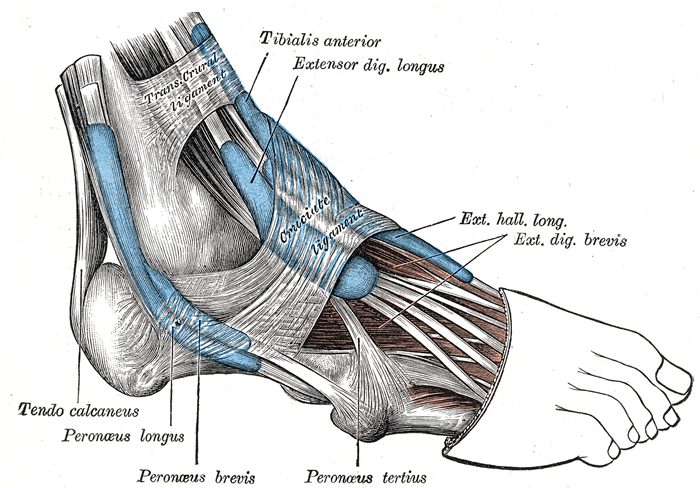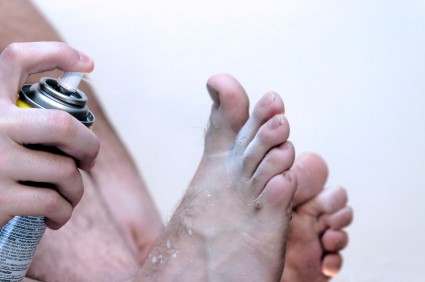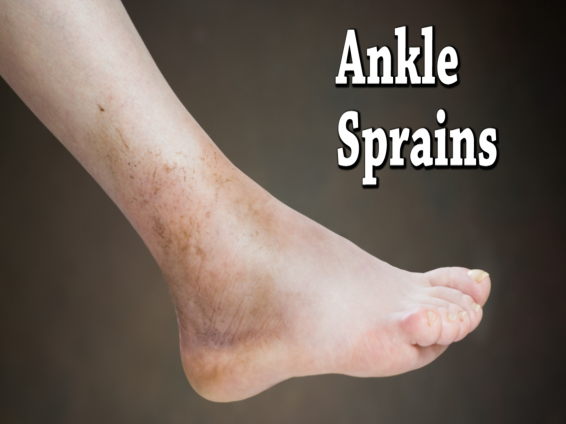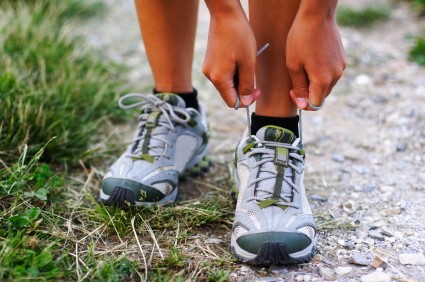Items filtered by date: September 2014
Scientists Discover In-Depth Roles of Foot Muscles
 According to scientists at the University of Queensland, their research has shed light upon the role of foot muscles when it comes to arch support. The scientists conducted an experiment involving weights that monitored the responses of the muscles in the feet as the subjects moved. This experiment proved that arch support involves more than just plantar fascia.
According to scientists at the University of Queensland, their research has shed light upon the role of foot muscles when it comes to arch support. The scientists conducted an experiment involving weights that monitored the responses of the muscles in the feet as the subjects moved. This experiment proved that arch support involves more than just plantar fascia.
Dr. Glen Lichtwark helped conduct another experiment involving electrical stimulation. When the electrical stimulation was activated, the tissues caused the arch to rise. Lichtwark believes that this may be a part of fields focusing on the feet. Fields focusing includes footwear design, rehabilitation from injury as well as the biological understanding of bipedalism.
The biomechanics are the cogs behind the gears that manage your feet. If you would like more information, see podiatrist Dr. Michael Newman of Pennsylvania. Dr. Newman can provide in-depth information as well as measure your personal foot biomechanics.
A History of Biomechanics
- Biomechanics dates back to the BC era in Egypt where evidence of professional foot care has been recorded.
- In 1974 biomechanics gained a higher profile from the studies of Merton Root, who claimed that by changing or controlling the forces between the ankle and the foot, corrections or conditions could be implemented to gain strength and coordination to the area.
Modern technology improvements are based on past theories and therapeutic processes providing a better understanding of podiatry concepts for biomechanics. Computers provide accurate determinations about the forces, moments and patterns of the foot and lower legs with the most important information captured.
Advances in materials and more awareness of biomechanics have developed enhanced corrective methods, offering further options for foot-related injuries. Understanding foot biomechanics can help improve and eliminate pain, stopping further stress to the foot.
If you have any questions, please contact one of our offices in Plymouth Meetings and Ambler, PA. We offer the newest diagnostic and treatment technologies for all your foot care needs.
Read more about Biomechanics of Podiatry.
Natural Remedies Can Help Treat Podiatric Conditions at Home
 Patients who try to minimize their time consuming prescription drugs can now employ natural remedies to successfully treat conditions such as Athlete’s foot. For a simple, ready-made treatment, apply apple cider vinegar or tea tree oil directly onto areas of the foot affected by the condition.
Patients who try to minimize their time consuming prescription drugs can now employ natural remedies to successfully treat conditions such as Athlete’s foot. For a simple, ready-made treatment, apply apple cider vinegar or tea tree oil directly onto areas of the foot affected by the condition.
Keep in mind that there are also a number of liquid solutions that can be made to wash the feet in. Mix one part white vinegar with two parts warm water to create a solution. The feet can soak for fifteen minutes. Grind garlic into a fine paste and mix into a tub of water to create another fifteen minute soak. Boil neem leaves in water for ten minutes, allow water to cool, and wash the feet in this twice a day.
Athlete’s foot can be treated with either prescription drugs or natural remedies like those aforementioned. Consult with podiatrist Dr. Michael Newman, DPM of Pennsylvania. Dr. Newman will attend to all of your foot and ankle needs.
Athlete’s Foot: The Sole Story
If you suffer from itching, burning, dry, and flaking feet, this may be a sign of athlete's foot. Athlete's foot, also known as tinea pedis, can be extremely contagious, and it often infects shower floors, gyms, socks and shoes, and anywhere else feet may come in contact with. It is commonly found in public changing areas and bathrooms, dormitory style living quarters, around locker rooms and public swimming pools.
Solutions to Combat Athlete’s Foot
- Hydrate your feet by using lotion
- Exfoliate
- Buff off nails
- Use of anti-fungal product
- Examine feet and visit your doctor if any suspicious blisters or cuts are present.
What is Tinea?
- Athlete’s foot is often caused by the same fungus that causes ringworm (tinea).
- Tinea can invade other parts of the body as well, if the proper thriving conditions for it are met.
- Tinea thrives in mostly dark, warm and moist environments.
- Although many people never experience athlete’s foot, around 70% of the population may suffer from tinea at some point.
For more information about Athlete’s Foot, follow the link below.
If you have any questions, feel free to contact our offices in Plymouth Meeting and Ambler, PA. We offer the latest diagnostic and treatment technologies for all your foot care needs.
Read more about Athlete’s Foot
New York Jets Cornerback Benched Due to Sprained Ankle
 Due to a high ankle sprain that happened amidst a team practice, Dee Milliner of the New York Jets will be spending four to six weeks resting and recovering. The swelling of Milliner’s sprain resembles that of a Grade 2 type, even though the official details of Milliner’s injury have not been announced to the public.
Due to a high ankle sprain that happened amidst a team practice, Dee Milliner of the New York Jets will be spending four to six weeks resting and recovering. The swelling of Milliner’s sprain resembles that of a Grade 2 type, even though the official details of Milliner’s injury have not been announced to the public.
Milliner will be spending all of his time on the bench during the first game of the regular season to ensure a quick and full recovery from his injury. While the Cornerback is out recovering, Antonio Allen and Ellis Lankster will most likely be chosen to temporarily take his place. Jets coach Rex Ryan had stated in a press conference that he, as well as the other team officials, felt as though Milliner’s condition was healing properly.
Some sprained ankles can be extremely worse than others, in any case it is always best to make sure your ankle is fully healed before engaging in strenuous activity. If your ankle is sprained, consult with Dr. Michael Newman, DPM of Pennsylvania. Dr. Newman will attend to all of your foot and ankle needs and answer all of your related questions.
How Does an Ankle Sprain Happen?
This type of injury takes place when the ligaments are torn or stretched beyond their limits. There are multiple ways that the ankle can become injured; however, even the simple act of walking may cause a sprain. If footing is lost or you are walking on uneven terrain, ankle damage may occur.
What are the Symptoms?
- Mild to moderate bruising
- Limited mobility
- Swelling
- Discoloration of the skin, depending on severity
Is there a Way to Care for my Ankle at Home?
Self-care for ankle sprains includes propping the ankle up and keeping it elevated, applying ice packs as needed, and remaining off your feet. Some may also find that wrapping the ankle with an ACE bandage and taking over-the-counter pain relievers are helpful. One of the most important things is to avoid further stress to the affected area.
Preventing a Sprain
- Wearing appropriate shoes for the occasion
- Stretching before exercises and sports
- Knowing your limits can aid in prevention
Treatment of a Sprain
Treatment of a sprain depends on the severity. Many times, people are told to rest and remain off their feet completely, while others are given an air cast, which will allow you to walk while stabilizing the ankle.
If you have any questions, feel free to contact our offices in Plymouth Meeting and Ambler, PA. We offer the latest diagnostic and treatment technologies for all your foot care needs.
Read more about Ankle Sprains
Scientists Study Role of Foot Muscles
 Scientists from the University of Queensland focused their research efforts, discovering that the plantar fascia is not the only part of the foot that can provide arch support. To prove this, an experiment involving weights was conducted. The scientists monitored the responses of the muscles in their feet.
Scientists from the University of Queensland focused their research efforts, discovering that the plantar fascia is not the only part of the foot that can provide arch support. To prove this, an experiment involving weights was conducted. The scientists monitored the responses of the muscles in their feet.
A subsequent experiment that involved electrical stimulation was performed soon after, showing that when activated, these tissues caused the arch to rise. Dr. Glen Lichtwark believes this could play an important role in fields focusing on the feet. This includes footwear design, injury rehabilitation, and even the biological understanding of bipedalism.
The biomechanics are the cogs behind the gears that manage your feet. If you would like more information, see podiatrist Dr. Michael Newman, DPM of Pennsylvania. Dr. Newman can provide in-depth information as well as measure your personal foot biomechanics.
A History of Biomechanics
- Biomechanics dates back to the BC era in Egypt where evidence of professional foot care has been recorded.
- In 1974 biomechanics gained a higher profile from the studies of Merton Root, who claimed that by changing or controlling the forces between the ankle and the foot, corrections or conditions could be implemented to gain strength and coordination to the area.
Modern technology improvements are based on past theories and therapeutic processes providing a better understanding of podiatry concepts for biomechanics. Computers provide accurate determinations about the forces, moments and patterns of the foot and lower legs with the most important information captured.
Advances in materials and more awareness of biomechanics have developed enhanced corrective methods, offering further options for foot-related injuries. Understanding foot biomechanics can help improve and eliminate pain, stopping further stress to the foot.
If you have any questions, feel free to contact our offices in Plymouth Meeting and Ambler, PA. We offer the latest diagnostic and treatment technologies for all your foot care needs.
Read more about Biomechanics of Podiatry.
U.S. Army Holds Research on Running Injuries in Soldiers
 The Army of the United States needs to make sure their soldiers are healthy, including their feet. To aid with keeping the frontlines battle fit, The Army conducted the Born To Run story line and the forefoot/rearfoot debate. The study delved into past-year injury rates among 1027 soldiers, which included 232 women who were injured.
The Army of the United States needs to make sure their soldiers are healthy, including their feet. To aid with keeping the frontlines battle fit, The Army conducted the Born To Run story line and the forefoot/rearfoot debate. The study delved into past-year injury rates among 1027 soldiers, which included 232 women who were injured.
“There are no large studies evaluating differences in injury profiles between heel strike and non-heel-strike runners,” one poster notes. “Due to high musculoskeletal injury rates in soldiers, a better understanding of the potential relationship between foot strike and injury could be beneficial to the military services.”
Running can be a great way to keep your body healthy, but it can also lead to injuries if you’re not careful. If you have a running injury, or are concerned about getting one, contact Dr. Michael Newman, DPM of Pennsylvania. Dr. Newman can instruct you on proper running techniques and help you keep your lower extremities safe.
How to Prevent Running Injuries
Many common running injuries are caused by overuse and overtraining. When the back of the kneecap starts wearing out and starts causing pain in your knee, this is commonly referred to as runner’s knee. Runner’s knee is a decrease in strength in your quadriceps and can occur if you’re not wearing properly fitted or supporting shoes. Runner’s knee usually is treated with strengthening exercises focusing on the quad muscles and sports orthotic. To prevent runner’s knee, focusing on hip strengthening is a good idea, as well as strengthening your quads to keep the kneecaps aligned. Physical therapy can help you learn the best exercises to heal runner’s knee.
What Are Some Causes of Running Injuries?
- One cause of a common running injury is called iliotibial band syndrome.
- Plantar fasciitis is also another common injury.
- Stress fractures can occur from overtraining, lack of calcium, or even your running style.
Best Ways to Prevent Running Injuries
- Wear footwear that fits properly and suits your running needs.
- Running shoes are the only protective gear that runners have to safeguard them from injury.
- Make a training schedule.
If you have any questions, feel free to contact our offices in Plymouth Meeting and Ambler, PA. We offer the latest diagnostic and treatment technologies for all your foot care needs.
Read more about Preventing Running Injuries
